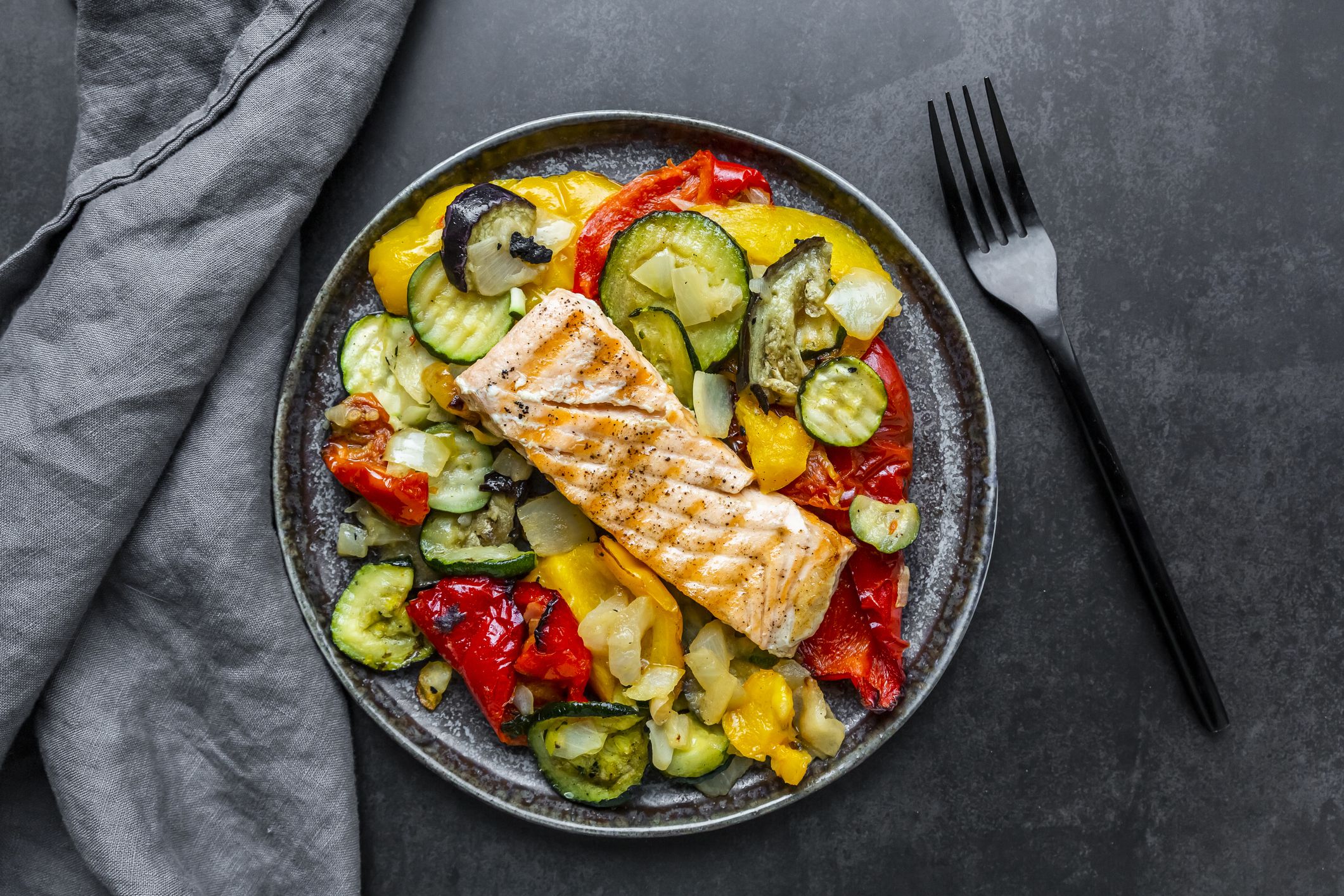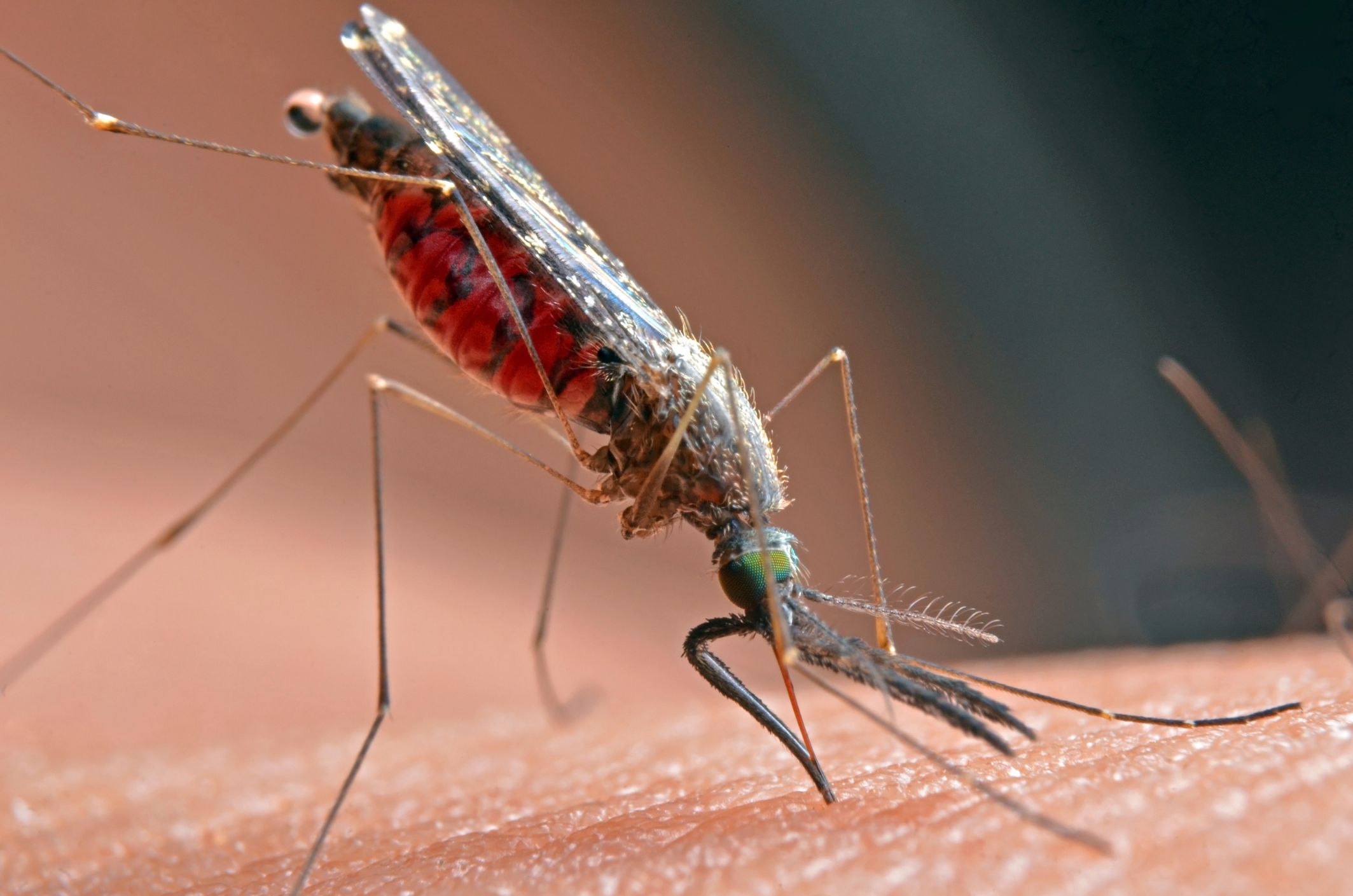Home>Gardening News and Trends>Latest News>What 2 Vegetables Kill Belly Fat


Latest News
What 2 Vegetables Kill Belly Fat
Modified: January 22, 2024
Latest News: Discover the incredible power of these 2 vegetables that effectively target and eliminate stubborn belly fat, helping you achieve your weight loss goals.
(Many of the links in this article redirect to a specific reviewed product. Your purchase of these products through affiliate links helps to generate commission for Chicagolandgardening.com, at no extra cost. Learn more)
Table of Contents
Introduction
Belly fat is a common concern for many people, as it not only affects our physical appearance but also poses various health risks. Excessive belly fat has been linked to conditions such as heart disease, diabetes, and even certain types of cancer. While there is no singular solution to target and eliminate belly fat, incorporating specific vegetables into your diet can play a crucial role in reducing stubborn belly fat.
Vegetables are not only low in calories and high in essential nutrients, but they also contain unique properties that can help in killing belly fat. In this article, we will explore two vegetables that have been proven to be effective in battling belly fat: leafy greens and cruciferous vegetables.
By understanding the benefits of these vegetables and learning how to incorporate them into your daily meals, you can take a significant step towards achieving your weight loss and fitness goals.
So, let’s dive into the details of these belly fat-fighting vegetables and how they can assist you in your journey towards a healthier and slimmer you.
Understanding Belly Fat
Belly fat, also known as visceral fat, is the fat that accumulates around the abdomen, particularly deep within the abdominal cavity. Unlike subcutaneous fat, which is located just under the skin, belly fat surrounds vital organs such as the liver, pancreas, and intestines.
While some amount of fat is necessary for insulation and protecting organs, excess belly fat can have detrimental effects on our health. This is because visceral fat is metabolically active, producing hormones and chemicals that can increase the risk of chronic diseases such as heart disease, type 2 diabetes, and certain cancers.
Several factors contribute to the accumulation of belly fat, including a sedentary lifestyle, poor dietary habits, hormonal imbalances, stress, genetics, and age. Poor eating habits, such as consuming a diet high in processed foods, refined sugars, and unhealthy fats, can lead to weight gain and the storage of excess fat around the abdominal area.
It’s important to note that belly fat can vary in type and distribution. Some individuals may have a higher proportion of subcutaneous fat, which is often more visible and easier to lose. Others may have a higher amount of visceral fat, which is hidden deep within the abdomen and poses a greater health risk.
Now that we have a better understanding of what belly fat is and how it can impact our health, let’s explore how certain vegetables can assist in reducing this stubborn fat and promoting a healthier body composition.
The Role of Vegetables in Reducing Belly Fat
When it comes to reducing belly fat, incorporating vegetables into your diet is key. Vegetables are packed with essential vitamins, minerals, and fiber, making them an integral part of a healthy and balanced eating plan. But beyond just their nutritional value, certain vegetables have specific properties and compounds that can aid in burning belly fat.
First and foremost, vegetables are low in calories and high in water content, which means they can help fill you up without adding excessive calories. This can contribute to creating a calorie deficit, which is essential for weight loss and reducing overall body fat, including belly fat.
Furthermore, many vegetables, such as leafy greens and cruciferous vegetables, are rich in fiber. Fiber not only aids in digestion but also promotes feelings of fullness and helps control appetite. By keeping you satisfied for longer periods, vegetables can help prevent overeating and unnecessary snacking, which can contribute to weight gain and belly fat accumulation.
In addition to their low-calorie and high-fiber content, certain vegetables contain specific compounds that can aid in burning belly fat. For example, leafy greens like spinach, kale, and Swiss chard are rich in chlorophyll, a pigment that has been shown to have potential fat-burning properties.
Cruciferous vegetables, such as broccoli, cauliflower, and Brussels sprouts, contain compounds called glucosinolates. These compounds are known to have anti-inflammatory and antioxidant properties, which may contribute to reducing belly fat and improving overall metabolic health.
Moreover, vegetables are typically low in carbohydrates, particularly the refined ones that can spike blood sugar levels and promote fat storage. By opting for vegetables as the main component of your meals, you can reduce your overall carbohydrate intake and help regulate insulin levels, which is crucial for belly fat reduction.
Incorporating a variety of vegetables in your diet not only provides important nutrients but also helps create a well-rounded and sustainable eating plan. The combination of their low-calorie, high-fiber nature along with their unique fat-burning properties makes vegetables a powerful tool in the fight against belly fat.
Next, let’s delve into two specific vegetables – leafy greens and cruciferous vegetables – that are particularly effective in killing belly fat.
Vegetable #1: Leafy Greens
Leafy greens are among the healthiest and most nutrient-dense vegetables available. They include options such as spinach, kale, Swiss chard, and collard greens. These vegetables are not only low in calories but also packed with essential vitamins, minerals, and antioxidants that promote overall health.
One remarkable characteristic of leafy greens is their high fiber content. Fiber promotes satiety, prevents overeating, and aids in digestion. Additionally, it helps regulate blood sugar levels, preventing insulin spikes that can lead to fat storage.
Leafy greens also contain a significant amount of chlorophyll, the pigment responsible for their vibrant green color. Chlorophyll has been associated with potential fat-burning properties. It may stimulate the production of certain enzymes that help break down fat cells, contributing to the reduction of belly fat.
Furthermore, leafy greens are rich in vitamins A, C, and K, as well as minerals like calcium, iron, and magnesium. These nutrients not only support overall health but also contribute to proper metabolic function, aiding in the burning of calories and fat.
Incorporating leafy greens into your diet can be as simple as adding them to salads, stir-fries, or smoothies. You can also enjoy them sautéed, steamed, or as a replacement for traditional wraps or sandwich buns. The versatility of leafy greens makes it easy to incorporate them into various dishes and reap their numerous benefits.
Try including a variety of leafy greens in your meals, experimenting with different flavors and textures. Whether it’s a spinach and feta omelet for breakfast, a kale and avocado salad for lunch, or sautéed Swiss chard as a side dish for dinner, you can enjoy the health benefits of leafy greens while working towards reducing belly fat.
Vegetable #2: Cruciferous Vegetables
Cruciferous vegetables are a group of vegetables that includes broccoli, cauliflower, Brussels sprouts, cabbage, and kale. These vegetables are not only delicious but also packed with essential nutrients and compounds that can aid in reducing belly fat.
One key component of cruciferous vegetables is their high fiber content. Similar to leafy greens, fiber promotes feelings of fullness, aids in digestion, and helps control appetite. By including cruciferous vegetables in your meals, you can create a satisfying and nutrient-dense plate without consuming excessive calories.
Furthermore, cruciferous vegetables contain a group of compounds called glucosinolates. These compounds have been shown to have anti-inflammatory and antioxidant properties, which can contribute to reducing belly fat and improving metabolic health.
In addition, cruciferous vegetables are rich in vitamins C, K, and folate, as well as minerals like potassium and calcium. These nutrients support various bodily functions, including metabolism and bone health, which are important for overall well-being.
Research suggests that certain compounds found in cruciferous vegetables, such as sulforaphane, may help reduce fat accumulation and promote energy expenditure. They may also have a positive impact on insulin sensitivity, which is crucial for maintaining optimal blood sugar levels and preventing excess fat storage.
Incorporating cruciferous vegetables into your diet can be done in a variety of ways. You can enjoy them steamed, roasted, or sautéed as a side dish or incorporate them into stir-fries, soups, or salads. Additionally, blending or juicing cruciferous vegetables can be a convenient way to consume their nutrients and reap their belly fat-fighting benefits.
Experiment with different cooking methods and flavor combinations to find the approach that suits your taste buds. Whether it’s roasted Brussels sprouts with garlic and Parmesan, a cauliflower rice stir-fry, or a crunchy cabbage slaw, there are countless ways to incorporate cruciferous vegetables into your meals and aid in reducing belly fat.
How These Vegetables Help in Killing Belly Fat
The inclusion of leafy greens and cruciferous vegetables in your diet can play a significant role in killing belly fat. Let’s take a closer look at how these vegetables contribute to reducing stubborn abdominal fat.
Firstly, both leafy greens and cruciferous vegetables are low in calories and high in fiber. This combination promotes feelings of fullness and helps control appetite, preventing overeating and excessive calorie intake. By creating a calorie deficit, these vegetables contribute to overall weight loss, including the reduction of belly fat.
Moreover, the high fiber content of these vegetables aids in digestion and promotes healthy bowel movements. A healthy digestive system is crucial for efficient metabolism and the elimination of waste products. By improving digestion, leafy greens and cruciferous vegetables support the body’s ability to burn fat and eliminate toxins.
In addition, these vegetables contain essential vitamins, minerals, and antioxidants that support metabolic function. Leafy greens are rich in chlorophyll, which has been associated with potential fat-burning properties. Cruciferous vegetables contain glucosinolates, which have anti-inflammatory and antioxidant effects. These compounds may help reduce inflammation in the body, improving metabolic health and promoting the breakdown of fat cells.
Furthermore, leafy greens and cruciferous vegetables are low in carbohydrates, particularly refined carbs that can lead to blood sugar spikes and insulin resistance. By reducing carbohydrate intake and opting for these vegetables instead, you can help regulate insulin levels and promote greater insulin sensitivity. This is crucial for weight management and reducing belly fat accumulation.
Lastly, incorporating these vegetables into your diet can help create a balanced and nutrient-dense eating plan. They provide essential vitamins, minerals, and antioxidants that support overall health and well-being. By nourishing your body with these nutrients, you not only aid in reducing belly fat but also promote optimal metabolic function and immune system health.
By including leafy greens and cruciferous vegetables in your meals, you can harness the potential fat-burning and health benefits they offer. Whether it’s adding them to salads, stir-fries, smoothies, or enjoying them as side dishes, these vegetables can be a powerful tool in your journey to kill belly fat and achieve a slimmer, healthier body.
Tips for Incorporating Leafy Greens and Cruciferous Vegetables in Your Diet
Adding leafy greens and cruciferous vegetables to your diet is easier than you might think. Here are some helpful tips to help you incorporate these belly fat-fighting vegetables into your daily meals:
- Start with small steps: If you’re not used to consuming leafy greens or cruciferous vegetables regularly, start by adding small amounts to your meals. Gradually increase the portion size and frequency as you get more comfortable with their taste and texture.
- Mix them into salads: Leafy greens, such as spinach and kale, make excellent additions to salads. Toss them with other vegetables, lean protein, and a healthy dressing for a refreshing and nutritious meal.
- Sneak them into smoothies: If the taste of leafy greens is not your favorite, try blending them into smoothies. You can mix them with fruits, yogurt, and a liquid of your choice to create a delicious and nutrient-packed beverage.
- Add them to stir-fries: Cruciferous vegetables like broccoli and cauliflower can be easily incorporated into stir-fries. Sauté them with other colorful vegetables, lean protein, and your choice of sauce for a flavorful and belly fat-busting meal.
- Roast them in the oven: Roasting leafy greens or cruciferous vegetables can enhance their flavor and add a delightful crispy texture. Drizzle them with olive oil, season with herbs and spices, and roast them in the oven until tender and slightly browned.
- Experiment with different cooking methods: Don’t be afraid to try different cooking methods to discover your preferred ways of preparing these vegetables. Steam, boil, sauté, or even grill them to add variety to your meals.
- Replace traditional carbs: Swap out refined carbohydrates like rice, pasta, or bread with leafy greens or cauliflower rice. This simple substitution can significantly reduce calorie intake and increase the nutrient value of your meals.
- Grow your own: Consider starting a small garden or growing your own herbs and vegetables. This can be a rewarding and cost-effective way to have a fresh supply of leafy greens and cruciferous vegetables at your fingertips.
Remember to keep an open mind and be creative in incorporating these vegetables into your meals. By exploring different recipes, cooking methods, and flavor combinations, you can discover delicious ways to reap the nutritional benefits and burn belly fat with leafy greens and cruciferous vegetables.
Conclusion
Incorporating leafy greens and cruciferous vegetables into your diet can make a significant difference in your efforts to reduce belly fat and improve overall health. These vegetables are low in calories, high in fiber, and packed with essential nutrients, making them ideal choices for weight loss and promoting optimal metabolic function.
Leafy greens like spinach, kale, and Swiss chard contain chlorophyll and offer potential fat-burning properties. On the other hand, cruciferous vegetables such as broccoli, cauliflower, and Brussels sprouts contain glucosinolates, which have anti-inflammatory effects and may aid in reducing belly fat.
By incorporating these vegetables into your meals, you can create a balanced and nutrient-dense eating plan that helps curb appetite, regulate insulin levels, improve digestion, and provide essential vitamins and minerals.
Remember, small steps can make a big difference. Start by gradually incorporating these vegetables into your meals, experimenting with different cooking methods, and exploring various recipes. Whether you toss leafy greens into salads, blend them into smoothies, sauté cruciferous vegetables as side dishes, or replace traditional carbs with cauliflower rice, there are numerous ways to enjoy the benefits of these belly fat-fighting vegetables.
With consistency and a varied approach, you can harness the power of leafy greens and cruciferous vegetables to support your weight loss goals and achieve a healthier, slimmer body. So, get creative in the kitchen and start enjoying the delicious and nutritious benefits of these vegetables today!






